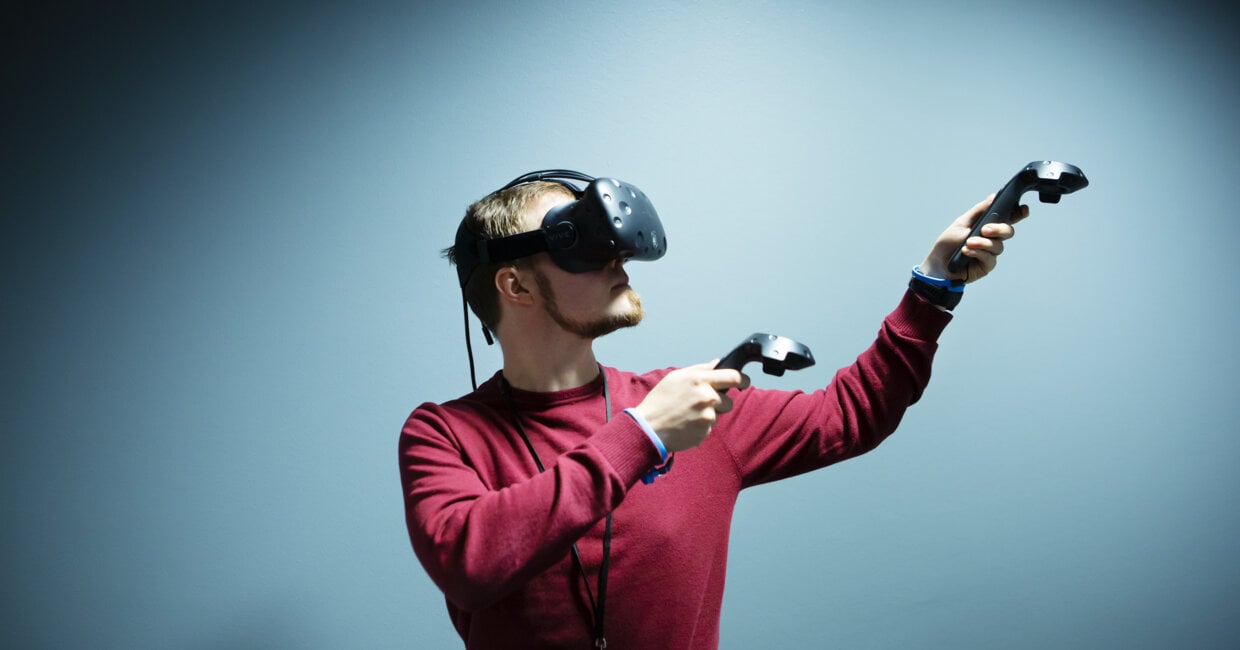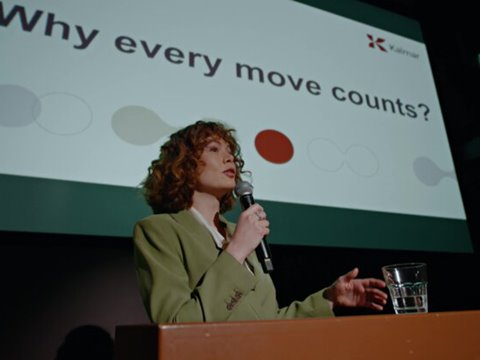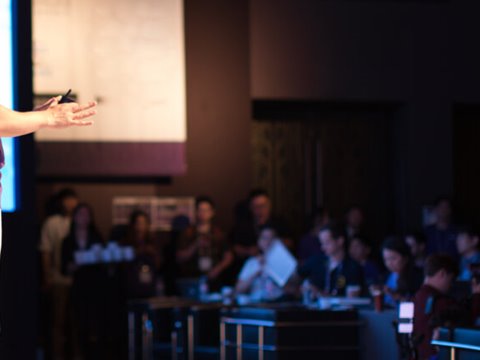
An engineer carried away by simulators
Developing simulators for terminal equipment is like creating PC games - a dream job for many young people today, but offers much more. Let’s meet Johannes Mansikkala, a simulation engineer at Kalmar’s Technology and Competence Centre in Tampere, Finland who has fun at work.
Landing a job where you develop simulators full-time had never even crossed Johannes Mansikkala’s mind when he studied machine automation at the Tampere University of Technology. Well, little did he know. Life takes some surprising turns.
In 2012, the young Mansikkala joined Kalmar to write his master’s thesis on modelling and simulation of rubber tyred gantry cranes (RTG), and was later hired as a full-time employee. Today, he is an enthusiastic member of the Simulation and Virtual Environments team. “Having a dedicated in-house simulation team is unique among equipment suppliers. It is much faster and more agile to build simulators here than to use external service providers. Instead of weeks, model changes can in some cases be made in just a few minutes,” Mansikkala says.
“With virtual prototypes, we can easily test a high number of variables which in real life is really difficult."
 The role of simulators is rapidly growing in product development. Earlier, you built a prototype of a machine to see whether it worked. If it didn’t, you built another one. This trial-and-error approach is very slow and expensive. Simulators now provide a modern platform on which it is possible to test new ideas or innovations at a very early stage. “With virtual prototypes, we can easily test a high number of variables which in real life is really difficult. Other benefits include repeatability, software regression testing and systematic troubleshooting,” Mansikkala says. “An integral part of doing this successfully is that our actual equipment control system is connected to the simulator and the simulator is integrated into our automation platform.”
The role of simulators is rapidly growing in product development. Earlier, you built a prototype of a machine to see whether it worked. If it didn’t, you built another one. This trial-and-error approach is very slow and expensive. Simulators now provide a modern platform on which it is possible to test new ideas or innovations at a very early stage. “With virtual prototypes, we can easily test a high number of variables which in real life is really difficult. Other benefits include repeatability, software regression testing and systematic troubleshooting,” Mansikkala says. “An integral part of doing this successfully is that our actual equipment control system is connected to the simulator and the simulator is integrated into our automation platform.”
Shorter delivery processes, better safety, higher productivity
Simulators have a major impact on delivery processes. With the automation level and complexity of deliveries constantly increasing, all software testing can now be carried out while the equipment is being designed, and not after it has been delivered to the customer site. This means that Kalmar’s delivery processes can be significantly shortened and there are no major software bugs to disrupt operations at the customer site.
And then there is the safety aspect. In the product development phase, it is possible to test all kinds of situations which in real life would present too high a risk to the staff or equipment. With a training simulator, terminal operators can get acquainted with their new equipment and learn to handle it safely and efficiently.
”Additionally, customers are more and more interested in our productivity simulations. With the simulation models, we are able to show customers which fleet alternatives allow them to reach the desired productivity,” Mansikkala explains.

Game development software used in visualisation
Mansikkala enjoys his work tremendously: “In our team we constantly run into things for which there are no right answers or ready-made solutions. In these cases, we study science journals or other sources to find out what’s new in modelling or how some other phenomena are being modelled. Although this requires a lot of work, it is really motivating to do something that has never been done before!”
In visualising simulators, the team uses the game development software Unity in which various machines and environments are modelled. Often, team members are seen sitting at their desks wearing virtual reality headsets and are virtually on the Kalmar test field or somewhere around the world at a customer site. Isn’t that exciting? Yes indeed!
Johannes Mansikkala
Age: 31
Education: Master of Science, Engineering
Primary working experience: With Kalmar since graduation in 2012 in different positions dealing with simulation modelling and simulation of RTGs, straddle carriers, ASCs and RMGs (with various other systems)
Family: wife and three Nova Scotia Duck Tolling retrievers
Hobbies: hunting, hiking, cycling and all kinds of nature activities
Related articles
Subscribe and receive updates in your email
Tilaa julkaisujamme













